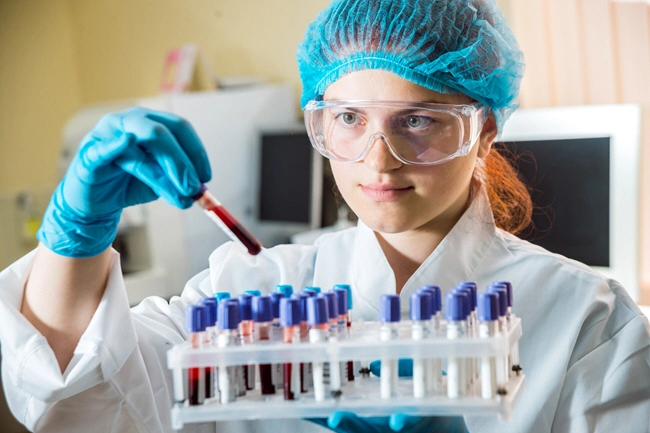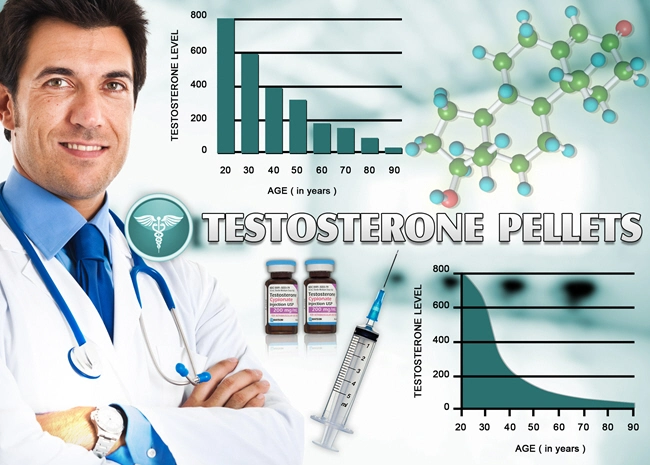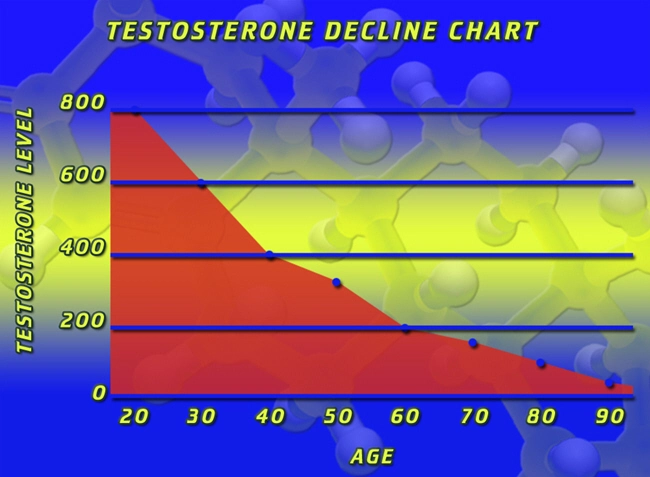
Introduction to Natesto
Natesto is a testosterone nasal gel approved by the FDA for the treatment of male hypogonadism, a condition characterized by low testosterone levels. This innovative therapy offers a non-invasive method for testosterone replacement, administered through the nasal passages. As with any medical treatment, understanding the potential side effects, including the impact on hair health, is crucial for American men considering this option.
Understanding Male Pattern Baldness
Male pattern baldness, or androgenetic alopecia, is a common condition affecting a significant portion of the male population in the United States. It is primarily driven by genetic factors and the influence of dihydrotestosterone (DHT), a derivative of testosterone. DHT can lead to the miniaturization of hair follicles, resulting in hair thinning and eventual baldness.
The Role of Testosterone in Hair Loss
Testosterone itself does not directly cause hair loss; rather, it is the conversion of testosterone to DHT by the enzyme 5-alpha-reductase that is implicated in male pattern baldness. Therefore, treatments that increase testosterone levels, such as Natesto, may indirectly influence hair loss by potentially increasing the amount of DHT in the body.
Natesto and Hair Loss: What the Research Says
Clinical studies on Natesto have primarily focused on its efficacy in raising testosterone levels and its overall safety profile. While hair loss is not a commonly reported side effect in these studies, the potential for increased DHT levels remains a concern for men predisposed to male pattern baldness. It is important for patients to discuss their genetic predisposition and family history of hair loss with their healthcare provider before starting Natesto.
Managing Hair Loss While Using Natesto
For men who experience hair thinning or loss while using Natesto, several management strategies can be considered. Firstly, monitoring testosterone and DHT levels through regular blood tests can help in adjusting the dosage or exploring alternative treatments if necessary. Additionally, medications such as finasteride, which inhibits the conversion of testosterone to DHT, can be used in conjunction with Natesto to mitigate the risk of hair loss.
Alternative Testosterone Replacement Therapies
For men concerned about the potential for hair loss with Natesto, other forms of testosterone replacement therapy (TRT) may be considered. Options include intramuscular injections, transdermal patches, and oral capsules. Each method has its own set of benefits and potential side effects, and the choice should be made in consultation with a healthcare provider based on individual health needs and preferences.
Lifestyle and Hair Health
Beyond medical interventions, lifestyle factors play a significant role in maintaining hair health. A balanced diet rich in vitamins and minerals, regular exercise, and stress management can all contribute to overall well-being and potentially reduce the risk of hair loss. American men using Natesto should strive to maintain a healthy lifestyle to support their treatment outcomes.
Conclusion: Making Informed Decisions
Natesto offers a convenient and effective option for men dealing with low testosterone levels. However, the potential for hair loss, though not universally experienced, is a consideration that should not be overlooked. By engaging in open discussions with healthcare providers, exploring all available treatment options, and adopting a holistic approach to health, American men can make informed decisions about their testosterone therapy and manage any associated risks effectively.
Contact Us Today For A Free Consultation
Dear Patient,
Once you have completing the above contact form, for security purposes and confirmation, please confirm your information by calling us.
Please call now: 1-800-380-5339.
Welcoming You To Our Clinic, Professor Tom Henderson.

- Natesto: Revolutionizing Fatigue Management in American Men with Hypogonadism [Last Updated On: March 17th, 2025] [Originally Added On: March 17th, 2025]
- Natesto: Revolutionizing Testosterone Therapy with Nasal Gel for American Men [Last Updated On: March 17th, 2025] [Originally Added On: March 17th, 2025]
- Natesto: Enhancing Cognitive Function in American Males via Intranasal Testosterone Delivery [Last Updated On: March 18th, 2025] [Originally Added On: March 18th, 2025]
- Comparing Natesto Nasal Gel to Traditional Testosterone Gels for TRT in American Men [Last Updated On: March 18th, 2025] [Originally Added On: March 18th, 2025]
- Natesto: Effective Testosterone Therapy for Aging American Men [Last Updated On: March 19th, 2025] [Originally Added On: March 19th, 2025]
- Natesto: A Nasal Gel Revolutionizing Testosterone Therapy for American Men [Last Updated On: March 20th, 2025] [Originally Added On: March 20th, 2025]
- Natesto: Nasal Testosterone Gel's Impact on Skin Health for American Men [Last Updated On: March 21st, 2025] [Originally Added On: March 21st, 2025]
- Natesto Testosterone Gel Enhances Sleep Quality in American Men: Clinical Insights [Last Updated On: March 21st, 2025] [Originally Added On: March 21st, 2025]
- Natesto: A Novel Nasal Gel for Managing Chronic Fatigue in American Men [Last Updated On: March 21st, 2025] [Originally Added On: March 21st, 2025]
- Natesto: Enhancing Weight Management in Men with Testosterone Deficiency [Last Updated On: March 22nd, 2025] [Originally Added On: March 22nd, 2025]
- Natesto: Enhancing Athletic Performance in American Male Athletes [Last Updated On: March 22nd, 2025] [Originally Added On: March 22nd, 2025]
- Natesto: FDA-Approved Nasal Gel for Hypogonadism Treatment and Monitoring Guidelines [Last Updated On: March 22nd, 2025] [Originally Added On: March 22nd, 2025]
- Natesto: Testosterone Therapy's Impact on Cardiovascular Health in American Males [Last Updated On: March 22nd, 2025] [Originally Added On: March 22nd, 2025]
- Natesto: A Game-Changing Nasal Gel for Testosterone Replacement in American Males [Last Updated On: March 23rd, 2025] [Originally Added On: March 23rd, 2025]
- Natesto: Tailoring Dosage for Optimal Testosterone Therapy in American Males [Last Updated On: March 23rd, 2025] [Originally Added On: March 23rd, 2025]
- Natesto: Enhancing Men's Health with Nasal Testosterone Therapy [Last Updated On: March 23rd, 2025] [Originally Added On: March 23rd, 2025]
- Natesto: Enhancing Testosterone with Diet and Exercise for American Men [Last Updated On: March 23rd, 2025] [Originally Added On: March 23rd, 2025]
- Natesto: Nasal Testosterone Gel for Hypogonadism - Benefits, Risks, and Considerations [Last Updated On: March 23rd, 2025] [Originally Added On: March 23rd, 2025]
- Natesto: Safe Testosterone Therapy for Hypogonadism and Prostate Health in American Men [Last Updated On: March 24th, 2025] [Originally Added On: March 24th, 2025]
- Natesto: Revolutionizing Testosterone Therapy with Nasal Gel for Hypogonadism in Men [Last Updated On: March 24th, 2025] [Originally Added On: March 24th, 2025]
- Natesto: Enhancing Mental Clarity and Cognitive Function in American Men [Last Updated On: March 24th, 2025] [Originally Added On: March 24th, 2025]
- Natesto: Revolutionary Nasal Gel for Testosterone Replacement in American Men [Last Updated On: March 24th, 2025] [Originally Added On: March 24th, 2025]
- Natesto: Enhancing Testosterone and Gut Health in American Males [Last Updated On: March 24th, 2025] [Originally Added On: March 24th, 2025]
- Natesto: Enhancing Male Libido and Sexual Health with Nasal Testosterone Therapy [Last Updated On: March 25th, 2025] [Originally Added On: March 25th, 2025]
- Natesto: Innovative Nasal Gel for Testosterone Deficiency in American Men [Last Updated On: March 25th, 2025] [Originally Added On: March 25th, 2025]
- Natesto: Innovative Nasal Gel for Testosterone Replacement in American Men [Last Updated On: March 25th, 2025] [Originally Added On: March 25th, 2025]
- Natesto: Enhancing Male Confidence and Self-Esteem Through Testosterone Therapy [Last Updated On: March 25th, 2025] [Originally Added On: March 25th, 2025]
- Natesto: Innovative Nasal Gel for Testosterone Replacement in American Men [Last Updated On: March 25th, 2025] [Originally Added On: March 25th, 2025]
- Natesto: Enhancing Immune Health in American Men Through Testosterone Therapy [Last Updated On: March 25th, 2025] [Originally Added On: March 25th, 2025]
- Natesto: Effective Intranasal Testosterone Therapy for Hypogonadism in American Men [Last Updated On: March 25th, 2025] [Originally Added On: March 25th, 2025]
- Natesto: Impact on Blood Sugar Levels in Diabetic American Men [Last Updated On: March 25th, 2025] [Originally Added On: March 25th, 2025]
- Natesto: A New Hope in Testosterone Therapy for American Men [Last Updated On: March 25th, 2025] [Originally Added On: March 25th, 2025]
- Natesto: Enhancing Stress Resilience in American Men with Testosterone Therapy [Last Updated On: March 25th, 2025] [Originally Added On: March 25th, 2025]
- Natesto: Nasal Testosterone Gel for Hypogonadism, Addressing Skin Sensitivity in American Men [Last Updated On: March 26th, 2025] [Originally Added On: March 26th, 2025]
- Natesto: Enhancing Physical Strength and Vitality in American Males with Hypogonadism [Last Updated On: March 26th, 2025] [Originally Added On: March 26th, 2025]
- Natesto: Enhancing Emotional Well-being in American Males through Testosterone Therapy [Last Updated On: March 26th, 2025] [Originally Added On: March 26th, 2025]
- Natesto: Testosterone Gel's Impact on Eye Health in American Men [Last Updated On: March 26th, 2025] [Originally Added On: March 26th, 2025]
- Natesto: A Convenient Nasal Gel for Testosterone Deficiency in American Men [Last Updated On: March 26th, 2025] [Originally Added On: March 26th, 2025]
- Natesto: Navigating Insurance, Affordability, and Healthcare Access for American Men [Last Updated On: March 26th, 2025] [Originally Added On: March 26th, 2025]
- Natesto: Revolutionizing Testosterone Therapy for American Men's Vitality [Last Updated On: March 26th, 2025] [Originally Added On: March 26th, 2025]
- Natesto: Innovative Nasal Gel for Testosterone Deficiency in American Men [Last Updated On: March 27th, 2025] [Originally Added On: March 27th, 2025]
- Natesto: Revolutionizing Testosterone Therapy for Aging American Males [Last Updated On: March 27th, 2025] [Originally Added On: March 27th, 2025]
- Natesto: Enhancing Joint Health and Mobility in American Men [Last Updated On: March 27th, 2025] [Originally Added On: March 27th, 2025]
- Natesto: Innovative Nasal Gel for Testosterone Deficiency in American Men [Last Updated On: March 28th, 2025] [Originally Added On: March 28th, 2025]
- Natesto: Revolutionizing Testosterone Therapy for Enhanced Male Vitality and Performance [Last Updated On: March 28th, 2025] [Originally Added On: March 28th, 2025]
- Natesto: Revolutionizing TRT with Nasal Gel for Hypogonadism in American Men [Last Updated On: March 28th, 2025] [Originally Added On: March 28th, 2025]
- Natesto and Liver Health: Monitoring and Management for American Men [Last Updated On: March 28th, 2025] [Originally Added On: March 28th, 2025]
- Natesto: Impact on Kidney Health and Monitoring Guidelines for American Men [Last Updated On: March 29th, 2025] [Originally Added On: March 29th, 2025]
- Natesto Nasal Gel: Impacts on Sleep Apnea in American Males [Last Updated On: March 30th, 2025] [Originally Added On: March 30th, 2025]
- Natesto: Safe Testosterone Nasal Gel for Hypogonadism in American Men [Last Updated On: March 31st, 2025] [Originally Added On: March 31st, 2025]
- Natesto: Managing Side Effects of Nasal Testosterone Therapy in Adult Men [Last Updated On: March 31st, 2025] [Originally Added On: March 31st, 2025]
- Natesto: Nasal Testosterone Gel for Hypogonadism and Allergic Reaction Risks [Last Updated On: April 2nd, 2025] [Originally Added On: April 2nd, 2025]
- Natesto's Impact on Dental Health: Insights and Recommendations for American Men [Last Updated On: April 3rd, 2025] [Originally Added On: April 3rd, 2025]
- Natesto: Enhancing Recovery and Healing in American Men with Testosterone Nasal Gel [Last Updated On: April 4th, 2025] [Originally Added On: April 4th, 2025]
- Natesto: Managing Testosterone Deficiency and Monitoring Blood Pressure in American Men [Last Updated On: April 5th, 2025] [Originally Added On: April 5th, 2025]
- Natesto: Enhancing Mental Health in American Men with Low Testosterone [Last Updated On: April 6th, 2025] [Originally Added On: April 6th, 2025]
- Natesto's Impact on Cholesterol Levels in American Males: A Comprehensive Overview [Last Updated On: April 7th, 2025] [Originally Added On: April 7th, 2025]
- Natesto: Effective Intranasal Testosterone Therapy for American Men with Hypogonadism [Last Updated On: April 7th, 2025] [Originally Added On: April 7th, 2025]
- Natesto: Enhancing Endurance and Stamina in American Men with Low Testosterone [Last Updated On: April 9th, 2025] [Originally Added On: April 9th, 2025]
- Natesto: Nasal Testosterone Gel for Male Hypogonadism and Digestive Health Benefits [Last Updated On: April 10th, 2025] [Originally Added On: April 10th, 2025]
- Natesto: Testosterone Therapy's Impact on Auditory Health in American Men [Last Updated On: April 10th, 2025] [Originally Added On: April 10th, 2025]
- Optimizing Natesto Dosage and Timing for American Males: A Comprehensive Guide [Last Updated On: April 11th, 2025] [Originally Added On: April 11th, 2025]
- Natesto: Testosterone Gel's Impact on Vision Health in American Males [Last Updated On: April 12th, 2025] [Originally Added On: April 12th, 2025]
- Natesto: FDA-Approved Nasal Gel for Hypogonadism in Men - Benefits and Considerations [Last Updated On: April 13th, 2025] [Originally Added On: April 13th, 2025]
- Natesto: Effects on Thyroid Function and Monitoring Guidelines for American Men [Last Updated On: April 13th, 2025] [Originally Added On: April 13th, 2025]
- Natesto: Enhancing Immune Response in American Males Through Testosterone Therapy [Last Updated On: April 13th, 2025] [Originally Added On: April 13th, 2025]
- Natesto: Nasal Testosterone Gel for Hypogonadism Treatment and Its Benefits [Last Updated On: April 15th, 2025] [Originally Added On: April 15th, 2025]
- Natesto: Benefits for Low Testosterone vs. Blood Clotting Risks in American Males [Last Updated On: April 16th, 2025] [Originally Added On: April 16th, 2025]
- Natesto: Enhancing Mood and Emotional Stability in American Males with Low Testosterone [Last Updated On: April 19th, 2025] [Originally Added On: April 19th, 2025]
- Natesto: Enhancing Skin Health and Combating Aging in American Men [Last Updated On: April 19th, 2025] [Originally Added On: April 19th, 2025]
- Natesto: Enhancing Cognitive Health in Aging American Men [Last Updated On: April 19th, 2025] [Originally Added On: April 19th, 2025]









